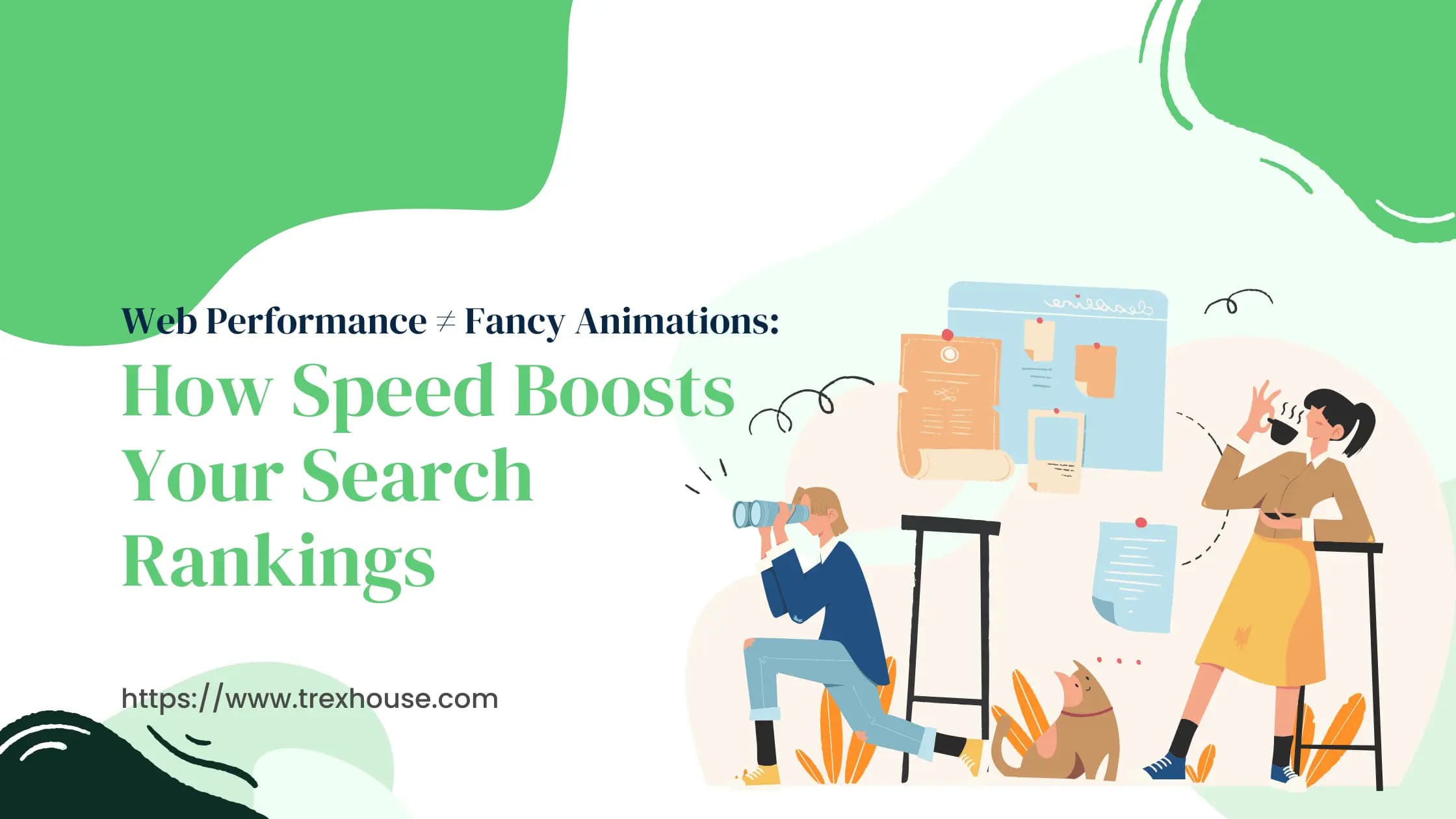Introduction
That slick parallax scroll and looping hero video may look impressive—but if your page lingers past a few seconds, visitors (and Google) won’t stick around long enough to admire them. Slow sites bleed:
- Visibility: Google downgrades sluggish pages.
- Revenue: Abandonment and lower conversion rates pile up.
- Trust: A “loading…” spinner signals an unprofessional brand.
Below, we unpack four performance factors that directly influence rankings and revenue, show real-world data, and explain how TREX House turns milliseconds into money.
1. Core Web Vitals 2.0—INP Joins the Scorecard
“The new metric, INP (Interaction to Next Paint), will replace FID as part of Core Web Vitals in March 2024.”
Why it matters
Google’s algorithm now grades your pages on LCP (loading), CLS (visual stability), and INP (input responsiveness). A red flag in any metric can push you below competitors—even if the design is gorgeous.
How TREX House can help
- Lighthouse and CrUX audits to surface failing templates.
- React/Next.js refactors: code-split, dynamic import, server components.
- Performance budgets baked into CI/CD so future releases stay green.
2. The 3-Second Patience Rule
“53 % of people will leave a mobile site if it takes more than three seconds to load.” —Think with Google
Why it matters
Mobile search dominates Malaysian traffic. Every extra second invites a bounce, shrinking dwell time—an indirect ranking signal Google watches closely.
How TREX House can help
- Next.js Image component + AVIF/WebP conversion for 30–70 % lighter payloads.
- Lazy-load below-the-fold assets and defer third-party scripts.
- Edge hosting on Cloudflare/Micro DCs around KL & Johor for sub-100 ms TTFB.
3. Speed-to-Sale Correlation
“Walmart found that for every 1-second improvement in page load time, conversions increased by 2 %.” —Cloudflare case study aggregation
Why it matters
Search ranking gets you on the results page; conversion pays the bills. E-commerce giants have quantified the link—your SME site is no exception.
How TREX House can help
- Profiling with WebPageTest to pinpoint conversion-killing bottlenecks.
- Implement HTTP/2 push & Brotli compression, often shaving 500 ms+ first-paint.
- A/B testing framework (Vercel Edge Functions) to prove ROI before full roll-out.
4. Crawl Budget & Indexability
“Improving page loading speed… helps optimise your crawl budget.” —Search Engine Journal
Why it matters
Google assigns a finite number of URLs it will fetch daily. Heavy pages waste that allowance, leaving new or updated content unseen—and unranked.
How TREX House can help
- Generate XML sitemaps with priority hints and last-mod dates.
- Serve stripped-down HTML snapshots to crawlers while keeping dynamic UX for users.
- Monitor server log files to validate crawl efficiency month-over-month.
Conclusion
Speed isn’t a “nice-to-have visual polish”—it’s a primary SEO lever, conversion driver, and credibility marker. By hard-coding performance into your stack, you rise in search, convert more visitors, and future-proof against algorithm shifts.
TREX House blends UX flair and engineering rigour, delivering web apps that load fast, rank high, and drive measurable growth.
Ready to shave seconds off your site and climb the SERPs?
Contact our team today for a no-obligation performance audit—slots fill quickly!





